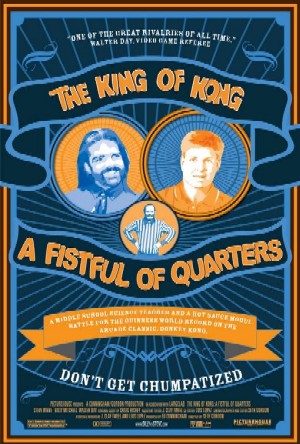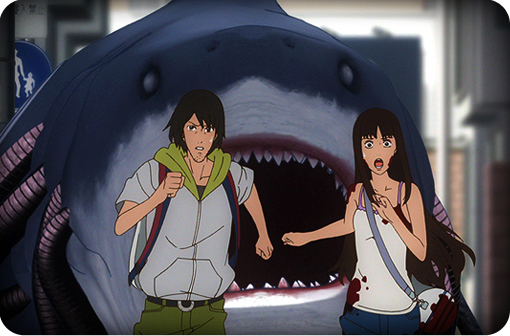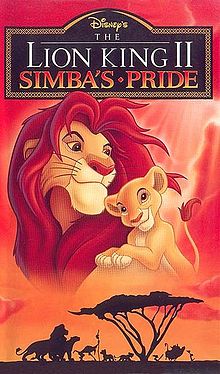 In one of his books Neil Strauss says something about male psychology. You can take literally any task in the world, give it grades, rankings, and scores, and men will become obsessed with it. What’s the point of martial arts? To learn how to defend yourself? Probably. Most of the guys at your local McDojo are there to attain a higher belt level.
In one of his books Neil Strauss says something about male psychology. You can take literally any task in the world, give it grades, rankings, and scores, and men will become obsessed with it. What’s the point of martial arts? To learn how to defend yourself? Probably. Most of the guys at your local McDojo are there to attain a higher belt level.
Donkey Kong is an arcade game released in 1981. It runs on a 3MHz CPU, a 224×256 resolution, and the game mostly involves dodging barrels thrown by a gorilla. But because there’s a world record at stake, grown men play it obsessively.
This documentary covers the war to set the top score in Donkey Kong. For many years, the highest score was held by a hot sauce entrepreneur called Billy Mitchell. Then, in 2007, an unemployed schlub called Steve Wiebe set a new record, causing a scandal in the community.
I mistrust King of Kong as a documentary. Its events seems too perfect, too movie-like, too different to real life. But it’s interesting. Lots of battling egos. I liked the way it captures the exhaustion of extended gaming marathons, with the players’ brains grinding themselves to mush. It’s not barrels or fireballs that kill the players at this level, it’s their own fatiguing mental circuits.
Wheels spin within wheels. How do you verify a high score in a videogame? Is a videotape enough, or do you need to perform it live at a “meet”? Is it possible that Steve Wiebe is playing on a “fixed” board that makes it easier to score? Is he being shafted by Twin Galaxies, the organisation that verifies videogame scores?
This movie could cause a psychoanalyst to start climbing the walls. Billy Mitchell in particular seems to have missed his true calling as a cult leader. He’s creepy, charismatic. He doesn’t speak, he asserts. Steve Wiebe seems much more down to earth, but his obsession with the game is only slightly less odd. There’s other memorable characters, like Walter Day, the incongruous head of Twin Galaxies, and Brian Kuh, a weird yes-man in Billy Mitchell’s corner. He doesn’t seem like a guy who has ever spoken to a girl, although he might not be a virgin if you take my meaning.
Probably the most bizarre person in this movie is Roy Schilt, “Captain Awesome”, who talks about his world record in Missile Command like it’s the Pulitzer Prize, and wonders why he hasn’t appeared on any TV shows yet.
And it does seem like a peculiarly male obsession. What’s one of the most popular games among women? The Sims, which has no goals, no scores, no competition. You win when you decide you’ve won. But men seem to need an element of contest in their games. Put them in suburban homes, put them in suits, give them haircuts (a poor one, in Billy’s case), and it doesn’t matter. Only the dead have seen the end of war.
 In 2012, Ufotable adapted Junji Ito’s legendary manga into a 70 minute OVA.
In 2012, Ufotable adapted Junji Ito’s legendary manga into a 70 minute OVA.
As in the comic, millions of fish suddenly sprout legs and start migrating inland, causing massive destruction. It’s a silly story, but Ito found a way to make it creepy and compelling, and Ufotable doesn’t deviate far from his plot. All the basic points are touched upon briefly – often too briefly (Brevity is the soul of wit, but it’s the soul of laziness, too), and while a different take on the manga might have been ideal, I’m glad they did this. The few times they take the story in a new direction are nearly enough to ruin the entire movie.
There’s lots of fanservice here. Lots of animated bouncing breasts and heroines tripping over so we can see their panties. This is all wrong – Ito’s comics aren’t about cockteasing T&A crap. It disrupts the atmosphere, and takes things to the level of a western horror film. You start wondering when the guy in the hockey mask will show up.
They switched the genders of the main characters, presumably so they could show a nubile young girl getting molested by a giant octopus. The male character Tadashi is now a fifth wheel. He has no purpose in the story because Kaori is now Princess Peach and Mario rolled into one, simultaneously a damsel in distress and a plucky heroine. They also added some secondary female characters who provide T&A and are generally of no import to the story.
A lot of stuff seems awfully rushed, and things that were lingered on unpleasantly. The two chapters in the circus were my favourite part of Gyo, a trippy interlude that reveals things might actually be worse than anyone could ever imagine. But they come across awkwardly in the movie, and it wouldn’t have hurt if they’d been scrapped. The business with Dr Koyanagi is handled pretty shittily as well, and a dark and interesting character becomes an annoying Dr Phibes.
There’s some effective scenes. Kaori carrying an injured friend up a staircase with a giant walking shark charging up the stairs behind her, with the shark kept out of the frame so that we don’t know how far away it is…that’s a spectacularly effective shot, and my heart rate increases every time I see it. Junji Ito has lamented that you cannot easily control pacing in comics, cannot decide how fast the reader experiences the action, and Takayuki Hirao seems keen to show that he is under no such limitation. The special effects are pretty good, and seeing all those walking fish running around Okinawa was nice.
But the soul of Gyo went missing in the transfer. There’s none of the comic’s sense of the absurd made palpable and real. The movie feels campy and trite, and not very scary. The comic had a dense atmosphere. Ultimately the Gyo Anime serves as an exercise in how to adapt a comic almost flawlessly – and yet, somehow, not truly adapt any of it at all.
 I watched this more times than the first Lion King movie. I think I was trying to persuade myself that it was better than the original. It isn’t, of course, but it’s still quite good – probably Disney’s best direct to video movie.
I watched this more times than the first Lion King movie. I think I was trying to persuade myself that it was better than the original. It isn’t, of course, but it’s still quite good – probably Disney’s best direct to video movie.
The music is not as good as the first movie, and overall things aren’t as bright and colourful and fun. Here the palette is muddy and dark, especially in the final scene, which makes Africa look rather like a Stalinist gulag. The Timon and Pumba characters are given a lot of time…probably a bit too much. I find them distracting.’
But the story’s surprisingly good, picking up where the first one left off. Not a lot of kids movies show the consequences of the hero’s actions, but this one does, with large numbers of Scar’s supporters banished from the tribe and nursing their wounds in the desert. The plot is a bit similar to other Disney movies, but The Lion King wasn’t a paragon of originality either, and the sequel has some twists and turns that probably wouldn’t have worked in the original’s Biblical/Hamlet inspired tale.
The voice talent is mostly intact, except that Rowan Atkinson no longer voices Zazu (and believe me, he’s much missed.) The new villain is just a female Scar without Scar’s sense of humour. I wonder why they didn’t have survive Lion King‘s final scene and make a comeback. When I was 10 and saw the ripped-to-shreds character Nuka, I misunderstood and thought that was exactly what they had done. As it is, Zira creates continuity problems. Where was she when the events of the first movie were happening?
Rafiki’s still in fine form, and Nala and Kovu are good characters. We don’t have the very typical scenario of the main character being the least interesting part of the movie, which is fortunate – some of Disney’s legit theater-released movies can’t say the same. The characterisation is good enough that the real stick-the-knife-in-and-twist scenes in the second half of the movie come off well, and are suitably moving.
In 1932, Walt Disney released a short called Three Little Pigs. The short proved unexpectedly popular, with audiences identifying with the pigs and reviling the wolf (who they saw as symbolic of The Great Depression). Disney banged out several more shorts, and when none of them created the original’s sensation did he is said to have remarked “you can’t follow pigs with pigs.” Maybe not, but you can certainly follow lions with lions, and this movie is proof.
 In one of his books Neil Strauss says something about male psychology. You can take literally any task in the world, give it grades, rankings, and scores, and men will become obsessed with it. What’s the point of martial arts? To learn how to defend yourself? Probably. Most of the guys at your local McDojo are there to attain a higher belt level.
In one of his books Neil Strauss says something about male psychology. You can take literally any task in the world, give it grades, rankings, and scores, and men will become obsessed with it. What’s the point of martial arts? To learn how to defend yourself? Probably. Most of the guys at your local McDojo are there to attain a higher belt level.

